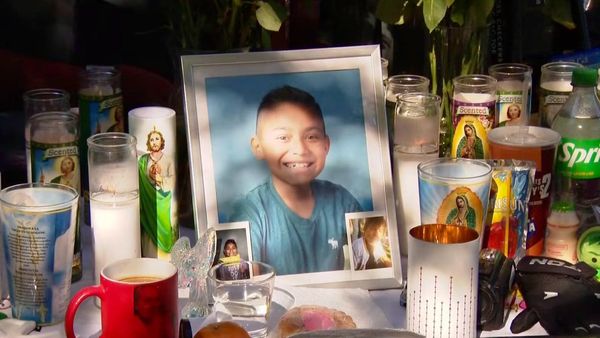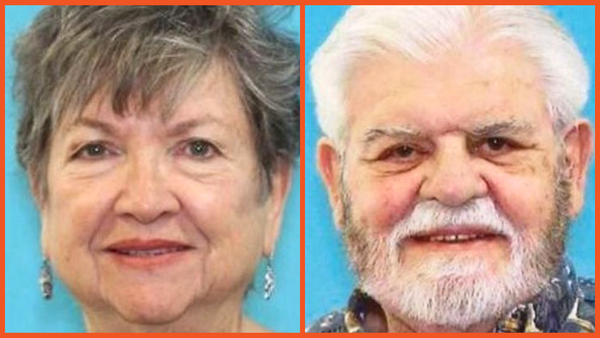
Yoshi Sekiguchi was known as the “Japanese Hank Williams” and he had a life like a country song.
It started with heartbreak and loss in Japan and ended in pride and triumph in the U.S.A.
He was a boy during World War II when his two older brothers, both kamikaze pilots, died fighting for Japan.
There were times when his family didn’t even have rice. They subsisted on sweet potatoes and whatever they foraged.
Young Yoshi taught himself English by listening to country music on U.S. military radio.
His spoken English echoed his native Japan but he sang like he came from a holler in the South.
At 17, he started entertaining U.S. troops in Occupied Japan.
When he performed “Your Cheatin’ Heart,” the homesick Americans let him know he’d captured Hank Williams’ indictment of faithlessness by shouting: “Hank! Hank! Hank!”
The servicemen started calling him the “Japanese Hank Williams,” Mr. Sekiguchi said in interviews. They gifted him a cowboy hat and Martin guitar.

He immigrated to the U.S., where he did graphic design for Burger King, Disney, DC Comics, Playboy and Sony. He invented and patented art technology. He lived in a Keck & Keck-designed midcentury modern home in Highland Park. And he drove an Audi, a Porsche and Mercedes-Benz.
Despite his successes, he sometimes was frustrated he hadn’t achieved more. “Many of the things I have done in my life were too radical or too soon. I also get bored easily doing the same thing for a long period of time,” he said in the 1987 book “Inside Design” by Mr. Sekiguchi and designer Mort Goldsholl.
Mr. Sekiguchi, who had dementia and other health issues, died March 11 at 90 at the Chicago home of his eldest daughter, Risa.
Through the changes in his life, country music was a comfort. Whether the lyrics were about lonesome train whistles or the joy of crawfish pie, it served as an entree into American society and a way of making friends.
“Japan lost the war miserably . . . my two brothers died as kamikaze pilots, one in Taiwan and one in Okinawa. But my love for country music overcome those sadness,” he said in a 2017 interview on the WGN 720 AM show Nocturnal Journal with Dave Hoekstra, who first reported his death.

Young Yoshi grew up one of six children of a naval officer in Yokosuka, a Navy town.
His resilience and optimism was evident in childhood. When he told stories of his youth, “It didn’t really sound like wartime,” said his youngest daughter, Juri.
He’d recall how a bombing could create opportunity. Afterward, fish would come floating up to the water’s surface, helping him feed his family. He crafted underwater goggles from a sardine can and a piece of glass to hunt for sea urchin and fish.
He studied Japanese war planes overhead, sketching them so skillfully that someone called the authorities after he sent drawings to friends. Juri said “They thought it was spy photos” until someone brought in Yoshi for questioning — “a little boy.”

After the war, he went to art school. “Japan didn’t have enough paper to print textbooks, so we received paper one sheet at a time,” he said in “Inside Design.”
As he studied American servicemen, “I was especially awestruck by the printing quality on [their] wrappers of candies, cigarettes, chewing gum,” he wrote. “They had many vivid colors, even silver and gold. My eyes had been accustomed to only black and white printing for so long.”
He grew frustrated trying to learn English.
“I had almost given up until I heard a very strange-sounding music. It was nasal-type singing, accompanied by a steel guitar,” he wrote. “Although the sound itself was very strange to my ears, I liked it! I was able to understand the English words in the song because they were spoken much slower than the fast-talking radio hosts.” He listened to Eddy Arnold, Lefty Frizzell, Tennessee Ernie Ford and Hank Snow.
The first American tune he learned was “You Are My Sunshine.”

Eventually he memorized hundreds of songs and taught himself to yo-de-lay-hee-hoo. “He was a really good yodeler,” said Risa.
He performed in Japanese bands with names like Drifting Cowboys, Tokyo Jamboree, Wagon Aces, Western Caravan, Western Jamboree and Western Rambler. He wore a fringed suit. He knew how to hand tool leather, so he decorated his guitar with “Sekiguchi.”

Mr. Sekiguchi supported his family with appearances at clubs and on Japanese TV. He also made records. One night at a show, he spotted a beautiful young woman and recognized her as the model he’d seen on a liquor poster. Yoshiko Nakajima was there on a date with another man and her chaperone.
Once they locked eyes, Mr. Sekiguchi sang only to her.
They married in 1959.

Mr. Sekiguchi started working at the Foreign Correspondents Club of Japan and eventually became a restaurateur, opening a Tokyo steakhouse he named “El Paso.” He designed the Western decor.
In the early 1960s, he took $500 in savings and sailed to the U.S. on the USS President Cleveland, he wrote in “Inside Design.” He headed to Tucson, where he sang at a dude ranch owned by customers he’d met at his Tokyo restaurant.
Some ranch guests encouraged him to come to Chicago, where he eventually became art director for VIP, a magazine for Playboy Club members. He worked with Hugh Hefner and designer Art Paul, creator of the famed bunny logo.

“Hef was my direct boss,” Mr. Sekiguchi said on WGN radio.
“They were right in the middle of Playboy when it was fashionable and hip,” said Risa. The Sekiguchis “took us to the Playboy clubs — that’s where we learned to ski.”

Mr. Sekiguchi patented what he called “Yoshimation,” a technology with moveable grids that gave two-dimensional designs the appearance of movement. He used it to create calendars for the Scholastic book series “Animorphs.”
Burger King featured it on millions of cups promoting the 1993 movie “Last Action Hero.”
Yoshimation’s special lenses also created hologram-like effects on promotional art for Disney DVDs of “Snow White” and “Aladdin,” said his middle daughter, Chika, whom he named for Chicago.
Mr. Sekiguchi opened his own art firm, Rising Sun. Over the years he did designs for the Japanese Chamber of Commerce and Industry of Chicago, won national awards for Christmas Seal designs and created packaging for Pink Whale Chocolatiers.
“He did things I couldn’t even begin to understand, even before digital graphics were the norm. He was amazing at photography and doing multiple exposures to give the illusion of movement,” said Rich Christianson, former editorial director for Wood & Wood Products magazine.
In 1987, when “Inside Design” was published, Mr. Sekiguchi included a lyric from Merle Haggard’s “Big City”:
Been working everyday since I was twenty
Haven’t got a thing to show
For anything I’ve done.
“I am glad to say,” he wrote, “I now have something to show.”
The Sekiguchis raised their daughters in a home with a Siamese cat named Gay Paree. They liked entertaining guests with Japanese feasts.
“He loved introducing people to Japanese things,” said photojournalist Suzanne Seed, Paul’s wife. “He was growing soybeans way back in the ’60s in his garden. He boiled them up and served them to us.”
And though he might greet people with “Howdy, pardner,” when he was at home with his family, “He was a strict Japanese father,” said Risa. His children had early curfews and studied Japanese on Saturdays at the Chicago Futabakai Japanese School.
Praise from their father meant a great deal. “A lot of immigrant parents are not very forthcoming with compliments,” said Chika, a designer who once focused on singing. “At one point he said, ‘That wedding song you wrote, that was pretty good.’ I just about fell over!”
When his children were growing up, he planned “cultural and gourmet family summer road trips to different parts of the country,” Juri said. “Maine for lobster, New Orleans for Cajun and creole food, Boston for soft-shell crabs, Montreal for French cuisine, New York for Japanese.”
Chika, then 15, used to accompany him when he started flying lessons at DuPage Airport. “I was flying before I was driving,” she said. “For him, I think it was a way to reconnect with his brothers, to feel what it was like to fly a plane and feel that freedom.”
His wife died before him. In addition to his daughters, Mr. Sekiguchi is survived by his sister, Toshiko, and three grandchildren.
“He believed anything was possible and always encouraged everyone to dream big and live bigger!” Chika said on Facebook. In his honor, his family is planning a summer barbecue with “lots of country music, hard drinks and dear friends!”








